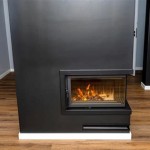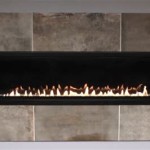Wood Burning Fireplace Cleaning Cost: A Comprehensive Guide
Maintaining a wood-burning fireplace involves regular cleaning to ensure safe and efficient operation. Creosote buildup, a byproduct of burning wood, poses a significant fire hazard. Understanding the costs associated with professional fireplace cleaning is crucial for homeowners planning their maintenance budgets. This article provides a detailed overview of the factors influencing fireplace cleaning costs, the services typically included, and considerations for choosing a qualified chimney sweep.
Factors Influencing Fireplace Cleaning Costs
The cost of cleaning a wood-burning fireplace is not fixed and varies based on several factors. These factors can significantly impact the overall expense, making it essential to obtain accurate estimates before scheduling a service.
Geographic Location: Prices for services, including fireplace cleaning, are influenced by regional economic conditions and the cost of living. Metropolitan areas with higher labor rates tend to have higher service costs than rural areas. Demand for fireplace cleaning services also fluctuates based on the climate. Areas with colder winters may experience higher demand, leading to potentially increased prices.
Fireplace Type and Size: The complexity of the fireplace design influences the cleaning cost. Larger fireplaces with intricate brickwork or multiple flues require more time and effort to clean. The type of fireplace, whether a standard open hearth, a freestanding stove, or an insert, also affects the cleaning process and associated costs. Freestanding stoves and inserts often require disassembly for thorough cleaning, adding to the labor involved.
Level of Creosote Buildup: The amount of creosote accumulated in the chimney flue directly affects the cleaning difficulty and time required. Creosote accumulation is categorized by three stages, each presenting a different level of fire risk and requiring varying cleaning methods. Stage one creosote consists of light, flaky soot that is relatively easy to remove. Stage two creosote is more hardened and requires more aggressive brushing or scraping. Stage three creosote is a hard, glazed substance that is extremely difficult to remove and may necessitate specialized tools or chemical treatments, significantly increasing the cleaning cost.
Chimney Height and Accessibility: The height of the chimney and its accessibility contribute to the overall cleaning cost. Taller chimneys require more time and specialized equipment to reach the top for inspection and cleaning. Difficult to access chimneys, such as those obstructed by trees or with steep roofs, necessitate additional safety precautions and potentially specialized equipment, raising the price. Chimneys requiring specialized rigging or scaffolding will incur higher costs.
Additional Services: Many chimney sweeps offer additional services alongside basic cleaning, such as chimney inspections, repairs, and waterproofing. These services add to the overall cost but can be essential for maintaining the fireplace and chimney's structural integrity and safety. Chimney inspections, particularly those involving video scanning, provide a detailed assessment of the chimney's condition and can identify hidden problems. Repairs, such as brick and mortar repair or flue liner replacement, can significantly increase the total cost. Waterproofing helps protect the chimney from water damage, which can lead to deterioration and costly repairs.
Typical Services Included in Fireplace Cleaning
Understanding what is included in a standard fireplace cleaning service helps homeowners assess the value and compare quotes from different chimney sweeps. A typical cleaning service involves several key steps designed to remove creosote and ensure the fireplace's safe operation.
Chimney Inspection: Reputable chimney sweeps always begin with a visual inspection of the chimney, both inside and outside. This inspection identifies potential problems such as cracks, loose bricks, or damaged flashing. The interior flue is checked for creosote buildup, blockages, and any signs of damage. The inspection provides a baseline assessment of the chimney's condition and helps determine the appropriate cleaning method.
Chimney Sweeping: The primary purpose of fireplace cleaning is to remove creosote buildup from the chimney flue. Chimney sweeps use specialized brushes and tools to scrub the flue walls, dislodging creosote deposits. The brushes are typically made of wire or polymer and are attached to flexible rods that can be extended to reach the entire length of the chimney. The sweep uses various brushing techniques to ensure thorough cleaning, paying close attention to areas with heavy creosote accumulation.
Smoke Chamber Cleaning: The smoke chamber, located above the damper, is another area where creosote can accumulate. The smoke chamber is cleaned using brushes and scrapers to remove creosote deposits. Proper cleaning of the smoke chamber is crucial for efficient smoke drafting and preventing chimney fires. A thorough cleaning ensures that smoke and combustion gases are properly vented out of the chimney.
Firebox Cleaning: The firebox, where the fire is built, is cleaned to remove ashes, soot, and debris. The firebox floor and walls are brushed and vacuumed to ensure a clean burning surface. Removing accumulated ash improves airflow and combustion efficiency. The cleaning also allows for a closer inspection of the firebox for cracks or damage.
Damper Inspection and Cleaning: The damper, which controls airflow into and out of the chimney, is inspected for proper operation. The damper is cleaned to remove soot and debris, ensuring it opens and closes smoothly. A properly functioning damper is essential for preventing heat loss when the fireplace is not in use and for controlling draft during burning. Damper repair or replacement may be necessary if it is damaged or malfunctioning.
Removal and Disposal of Debris: Chimney sweeps collect and remove all debris, including creosote, soot, and ashes, from the fireplace and chimney. The debris is typically collected in a vacuum system or sealed containers to prevent dust and odors from spreading. Proper disposal of the collected debris is essential for environmental safety and to prevent fire hazards.
Choosing a Qualified Chimney Sweep
Selecting a qualified and reputable chimney sweep is crucial for ensuring the safety and effectiveness of the cleaning service. Hiring an unqualified individual can lead to inadequate cleaning, potential damage to the chimney, and increased fire risk. Homeowners should consider several factors when choosing a chimney sweep.
Certification and Licensing: Look for chimney sweeps certified by organizations such as the Chimney Safety Institute of America (CSIA) or the National Fireplace Institute (NFI). Certification demonstrates that the sweep has undergone training and passed examinations to demonstrate knowledge of chimney cleaning and safety practices. Some states and municipalities require licensing for chimney sweeps, so it is essential to verify that the sweep is properly licensed to operate in the area.
Insurance and Bonding: Ensure that the chimney sweep carries adequate liability insurance and worker's compensation insurance. Liability insurance protects the homeowner in case of damage to the property during the cleaning process. Worker's compensation insurance covers the sweep in case of injury while on the job. Bonding provides additional financial protection in case of fraud or poor workmanship.
Experience and Reputation: Choose a chimney sweep with a proven track record of experience and a positive reputation. Ask for references from previous customers and check online reviews to assess the sweep's reliability and quality of service. A sweep with several years of experience is more likely to have encountered a variety of chimney conditions and cleaning challenges.
Detailed Estimates and Contracts: Obtain a detailed written estimate outlining the services to be performed and the associated costs. The estimate should include a breakdown of the cleaning process, any additional services, and the total price. A contract should be signed before work begins, specifying the terms and conditions of the service. Avoid sweeps who provide vague estimates or refuse to put the agreement in writing.
Professional Equipment and Techniques: A qualified chimney sweep uses professional-grade equipment and follows industry-standard cleaning techniques. The sweep should have a variety of brushes, scrapers, and vacuum systems to effectively remove creosote from different types of chimneys. The sweep should also use drop cloths and protective coverings to prevent dust and debris from spreading throughout the house. Safe work practices, such as using safety harnesses when working on roofs, are also essential.
Thorough Inspection and Reporting: A reputable chimney sweep performs a thorough inspection of the chimney before and after cleaning. The sweep should provide a written report outlining the condition of the chimney, any problems identified, and recommendations for repairs or maintenance. The report should include photographs or videos to document the inspection findings. A comprehensive inspection and reporting process ensures that the homeowner is fully informed about the condition of the chimney and any necessary repairs.
By carefully considering these factors, homeowners can select a qualified chimney sweep who provides safe, effective, and reliable cleaning services. Regular fireplace cleaning is essential for maintaining the safety and efficiency of a wood-burning fireplace and preventing potentially dangerous chimney fires.

Cost To Sweep A Chimney Cleaning Fixr

Cost To Sweep A Chimney Cleaning Fixr

Cost To Sweep A Chimney Cleaning Fixr

How Much Does Chimney Cleaning Cost In 2024 Forbes Home

Cost To Sweep A Chimney Cleaning Fixr

How Much Does Chimney Cleaning Cost Orange County Register

How Much Does A Chimney Sweep Cost

Cost To Sweep A Chimney Cleaning Fixr

How Much Does A Chimney Sweep Cost 2024 Bob Vila

How Much Does Fireplace Repair Cost On Average
Related Posts








